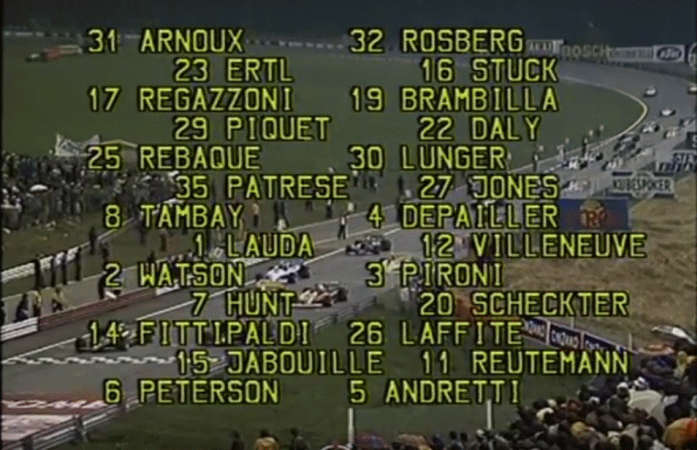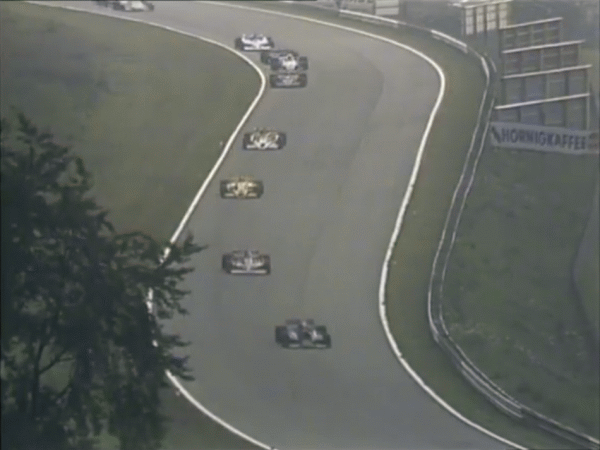
|
1978 | 2018
by Ninni Radicini
|

|

|
1978 | 2018
by Ninni Radicini
|

|






| Pos. | Driver | Constructor and number | Laps | Time | Grid | Points |
|---|---|---|---|---|---|---|
| 1 | Ronnie Peterson | 54 | 1h41'21'' | |||
| 2 | Patrick Depailler | 54 | +47'' | |||
| 3 | Gilles Villeneuve | 54 | +1'39'' | |||
| 4 | Emerson Fittipaldi | 53 | +1 lap | |||
| 5 | Jacques Laffite | 53 | +1 lap | |||
| 6 | Vittorio Brambilla | 53 | +1 lap |

|
Ninni Radicini (Sicily) has written and published various articles on Germany (political-electoral-historical area). Articles on other topics have been published on various periodicals. He also published reviews and book prefaces. Co-author of the book Contemporary Greece 1974-2006 (La Grecia contemporanea 1974-2006) (book only in Italian edition). |
|
Planet of the Apes 1968 | 2018 In 1968, in cinemas arrives Planet of the Apes, whose narrative development is such as to rise above the science fiction genre to which it is ascribed. It is derived from the novel La Planète des singes, by the French writer Pierre Boulle, published in 1963. Review by Ninni Radicini The Trinacria. History and Mythology Symbol of convergence of Sicily with Hellenic and Norman History and Culture The symbol of Trinacria is now known because in the flag of Sicily and that of the Island of Man. Its history is complex and in some ways still shrouded in mystery, or at least in indeterminacy, as it relates to mythology. The Trinacria, symbol of Sicily, is composed of the head of the Gorgon, whose hair is entwined serpents with ears of corn, from which radiate the three legs bent at the knee. Article by Ninni Radicini From the loser's side. Eine Geschichte im Fluß der Erinnerungen (Novel by Nidia Robba) Wirtschaftswunder, the economic miracle that has characterized the contemporary history of Germany and in general of the German area (including Austria) starts from the early 50s, having its prodrome at the end of the previous decade when, immediately after the conclusion of the Second World War, the German people had to start reconstruction. «The road to infinity» (Preface by Ninni Radicini) Maria Callas: From the stage of the Opera, a modern legend In the recurrence of forty years after the death of Maria Callas (Maria Anna Sofia Cecilia Kalogeropoulos, New York City, 02 December 1923 - Paris, 16 September 1977), an exhibition in Greece, in Athens, at the B&M Theocharakis Foundation, celebrates her relevance as a personality in the history and culture of the Twentieth century. Article by Ninni Radicini |